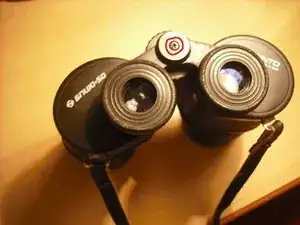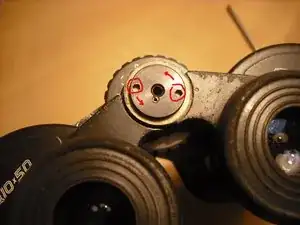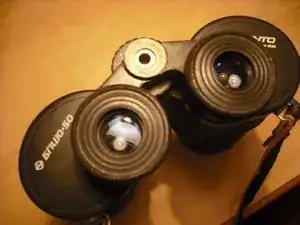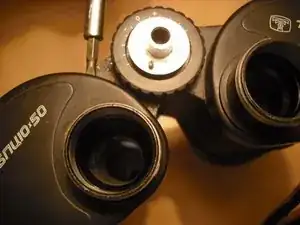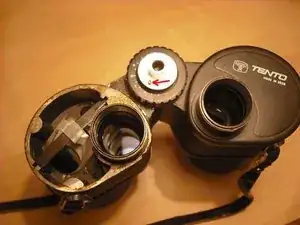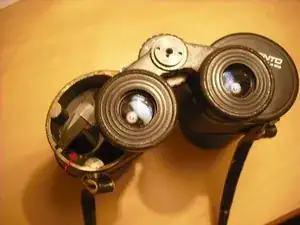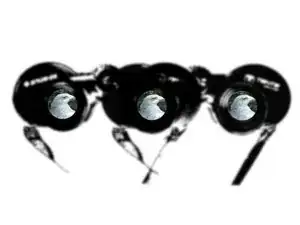Introduzione
I was given these wonderful "Made in the USSR" binoculars by my father to view Halley's Comet in 1986. Imagine my dismay when they got dropped, then were misaligned! They were in their box at the time, but that was enough to make the image look doubled. Turns out the reason was the prisms had been displaced slightly. Now, the Soviets made these to last, right?
Better binoculars than these, have adjustment screws at the sides, and adjustable objective (big front) lenses. This is not "true" collimation. Having said all that, this is what I did to get them usable again. Perhaps this might help with fixing other binoculars, too.
Strumenti
-
-
Turn CR-V 1.0 screw bit anti-clockwise. Because this screw is so small, it may help to magnitise your screw bit by brushing it with a magnetic screwdriver first. This will make the screw stick to the screw bit. Have a dish handy to keep the tiny screw in.
-
-
-
Remove silver washer.
-
Remove right eyepiece.
-
Remove another silver washer.
-
Remove left eyepiece.
-
-
-
There are no screws holding the dust cover on but you will need to unscrew and remove each eyepiece barrel (not shown in photo). The cover should then lift off fairly easily. If not then work around it with a screwdriver. Eventually it will come off.
-
-
-
Now you can see the prism, which is likely the part that needs adjusting.
-
Replace the left eyepiece, observing the fitting point (arrowed).
-
Replace washer.
-
Replace right eyepiece.
-
Replace washer.
-
Replace locknut.
-
-
-
Using a flat bladed screwdriver, fit it into the open area around the exposed prism, with the blade laying along side the prism. Try to position the screwdriver's blade so that when you twist the screwdriver you cause the prism to shift position slightly.
-
Look for a couple of other places around the prism where you can insert the screwdriver, and by twisting it, slide the prism. These will be your adjustment points. Thank you dannewberry of http://practicalrifler.fr.yuku.com/topic... for this tip.
-
Play with moving the prism until the image looks immediately clear when you bring the binoculars up to your eyes. Remember that your eyes will have a natural tendency to align themselves with the misaligned binoculars if you stare too long (and get eyestrain).
-
Close your right eye and check that the image is clear on the left, then close your left eye and focus the right occular, then look away at an object (without the binocs) so that your eyes are in normal convergence -- and then look quickly into the binocs to see if the collimation is good.
-
The night sky is more prone to double-image because there is less information in the image for your brain to work with.
-
-
-
Look through the binocs at a distant object.
-
Keep your eyes focused on the distance, while moving the binocs away to arms-length. Or if you have something to fix the binocs to, move your head away straight back.
-
If the binocs are out of alignment, the centre images won't overlap. When you look straight 'through', the centre image should be just like looking through a tunnel. If so, congrats, the binoculars are aligned - for you!
-
Please note that someone else, whose eyes are a different width apart than yours, may still notice an error. This is because the "knock" - and your correction - might not be along the axis of the hinge.
-
Remove the eyepieces again, then follow steps 1-5 in reverse order.
2 commenti
Great piece of advise and good, clear instructions phil. I have 4 sets of russian bins and mons, so this will come in very handy!
Many thanks.
Mark
Binoculars are usually collimated by turning a front lens. You have to make a simple tool to untighten these but from there on it is not difficult. I am not sure the method above is advisable. Sliding a prism out of place by brute force is unlikely to produce a predictable result, except maybe damage.
